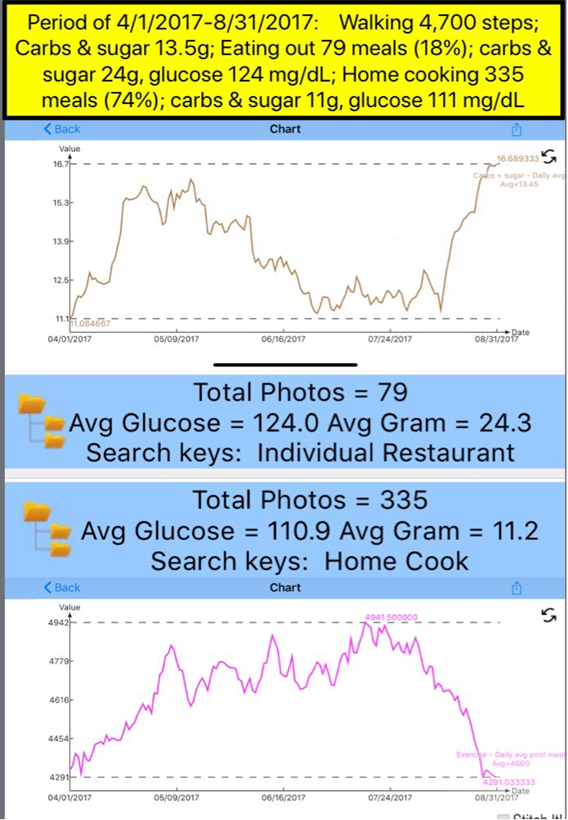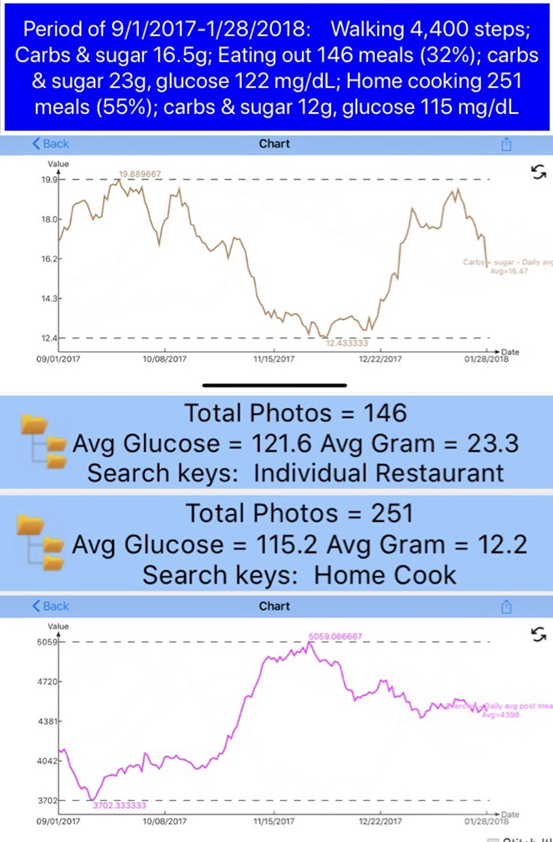Research Article
Volume 2 Issue 2 - 2020
Using GH-Method: Math-Physics Medicine to Control Type-2 Diabetes
EclaireMD Foundation, USA
*Corresponding Author: Gerald C. Hsu, EclaireMD Foundation, USA.
Received: April 01, 2020; Published: April 30, 2020
Introduction
The author spent 8.5 years and 23,000 hours to research his diabetes conditions. He developed his GH-Method: math-physical medicine (MPM) by applying mathematics, physics, engineering modeling, and computer science (big data analytics and AI). He believes in “prediction” and has developed five models, including metabolism index, weight, fasting plasma glucose (FPG), postprandial plasma glucose (PPG), and hemoglobin A1C. All prediction models have reached to 95% to 99% accuracy. His focus is on preventive medicine, especially on diabetes control via lifestyle management.
The author has had type-2 diabetes (T2D), hyperlipidemia, and hypertension for 25 years. His health data in 2010 versus 2018 are listed as follows:
Weight: 205/170 lbs.
Waistline: 44/33 in.
FPG/PPG: 185/380 vs. 107/119 mg/dL
90-days daily glucose: 279/117 mg/dL
A1C: 10.0%/6.5 %
ACR: 116/12 mg/mmol
Triglycerides: 1161/67 mg/dL
LDL/HDL: 174/28 vs. 74/48
SBP/DBP: 250/113 vs. 105/65 mmHG
Waistline: 44/33 in.
FPG/PPG: 185/380 vs. 107/119 mg/dL
90-days daily glucose: 279/117 mg/dL
A1C: 10.0%/6.5 %
ACR: 116/12 mg/mmol
Triglycerides: 1161/67 mg/dL
LDL/HDL: 174/28 vs. 74/48
SBP/DBP: 250/113 vs. 105/65 mmHG
Method
He applied multiple nature scientific disciplines, including advanced mathematics, big data analytics, artificial intelligence, cloud mobile computing, nonlinear engineering modeling, optical physics, signal processing, wave theory, and energy theory to conduct his research for 23,000 hours in 8.5-years. He simulated the human organic metabolic system using 10 categories including four outputs (weight, glucose, blood pressure, lipid), and six inputs (food, exercise, stress, sleep, water, life pattern regularity) with ~500 elements. He defined two new terms, metabolism index (MI) and General Health State Unit (GHSU) for measuring his daily health status. He collected ~1.5 million data and developed four prediction models with more than 20 influential factors, Weight, FPG, PPG, A1C, to provide early estimation and warning.
He performed statistical analyses, including time-series, spatial analysis, frequency domain, for durations between 1,280 and 1,825 days with about 30,000 - 90,000 data to identify basic characteristics of glucose formation and prediction. Primary factors, such as medication, weight, carbs & sugar, exercise, and weather contribute about 90% of glucose formation. Secondary factors, such as measurement of time, stress, sleep, illness, and traveling provide the remaining 10% of the glucose formation.
Results
The predicted results for weight, FPG, and PPG have reached >99% linear accuracy and >80% correlation with actual data. The predicted A1C has >95% accuracy rate due to the 5% to 10% safety margin.
Conclusion
The author applied GH-Method: math-physical medicine, which is a scientific and quantitative lifestyle management method, to successfully control his T2D conditions.
Citation: Gerald C. Hsu. (2020). Using GH-Method: Math-Physics Medicine to Control Type-2 Diabetes. Archives of Nutrition and Public Health 2(2).
Copyright: © 2020 Gerald C. Hsu. This is an open-access article distributed under the terms of the Creative Commons Attribution License, which permits unrestricted use, distribution, and reproduction in any medium, provided the original author and source are credited.



